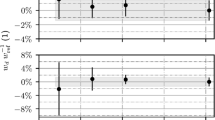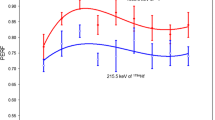Abstract
The widespread introduction of rapid pneumatic sample transfer systems has enabled instrumental neutron activation analysis to be based on an increasing number of very short-lived activities. Furthermore, these transfer systems have been interfaced to computer-based MCA's so that the experimenter has complete control over irradiation, decay and counting times, as well as being able to arrange the automatic transfer of numbers of samples between the various stations. Thus the analyst now has a series of options available to him to make the best use of time and facilities. Based on the requirements of detection limits and precisions, he will choose between various irradiation and counting régimes (a) single i.e. conventional (b) cyclic and (c) repeated; or he may choose to replicate the sample a number of times. This paper examines how detection limits and precisions are affected by the above options. By considering a specific isotope, being detected in backgrounds of different half-lives, it is possible to calculate “signal-to-noise ratios” in each of these cases, and hence compare these régimes from this aspect. Based on calculations for the isotope77mSe (17.5 s), which is now being widely accepted as the basis for selenium analysis, it is shown that, if a low detection limit is the prime consideration, then replicating samples is the procedure of choice; however, if commercial considerations of sample throughput are important then a “pseudocyclic” régime would provide the best compromise.
Similar content being viewed by others
References
N. M. SPYROU, J. Radioanal. Chem., 61 (1981) 211.
R. L. CALDWELL, et al., Science, 152 (1966) 457.
V. P. GUINN, Radiochem. Radioanal. Lett., 44 (1980) 133.
S. PARRY, J. Radioanal. Chem., 75 (1982) 253.
N. M. SPYROU, et al., J. Radioanal. Chem., 61 (1981) 121.
A. EGAN, Ph. D. Thesis, University of Surrey, Guildford, England, 1977.
A. CHATT, et al., Can. J. Chem., 59 (1981) 1660.
G. P. WESTPHAL, J. Radioanal. Chem., 70 (1982) 387.
Author information
Authors and Affiliations
Rights and permissions
About this article
Cite this article
Egan, A. Detection limits and precisions in various irradiation and counting regimes. Journal of Radioanalytical and Nuclear Chemistry, Articles 110, 47–50 (1987). https://doi.org/10.1007/BF02055008
Received:
Issue Date:
DOI: https://doi.org/10.1007/BF02055008




